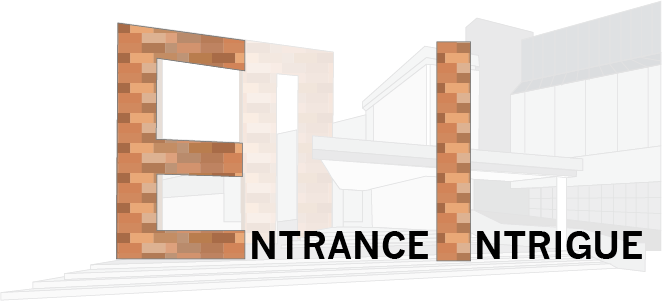Entrance Intrigue: Investigating East’s Ambiguous Entryway
March 6, 2017
For a small city, Columbus maintains a seemingly large amount of complex architecture and art pieces. Some pieces have been here for decades; others have been here for only a year.
With the excess, art tends to fade into the background, blinders are put up in response to their cries for attention, observation and personal interpretation. The same holds true for the “monumental” brick structure that stands by the Columbus East main office doors, one you probably dismiss or allow to fade into the back of your mind.
The odd shape suggests that there is a story behind it, a story that, thus far, lacks a definite conclusion – therefore leading students to ask the questions:
“What is that supposed to be? What does it mean?”
These are ongoing questions you ask a friend when entering school in the morning or when walking to your car at the start of the lunch mod. These questions are typically answered with a less than satisfactory answer:
“I don’t really know, I’m not sure if anyone does. Maybe X, Y or Z.”
However, this unsatisfactory answer always lingered in the back of my head for a few minutes after the conversation was brushed away and the topic changed.
“I’m not sure if anyone does.”
That statement is truly baffling to consider – no one knows what the enormous, brick monument sitting outside of our school means? Does it legitimately serve no known purpose other than to just sit there in a lonely existence at the front of the building, just another piece of architecture you look at once and dismiss every time after that?
Surely, there is someone inside of East who knows its purpose, its meaning. We did not simply place a random stack of bricks in front of the building for no reason.
Refusing to accept this half-baked answer and determined to figure out the truth, I began the seemingly simple task of investigating the background and inspiration behind the bricks.
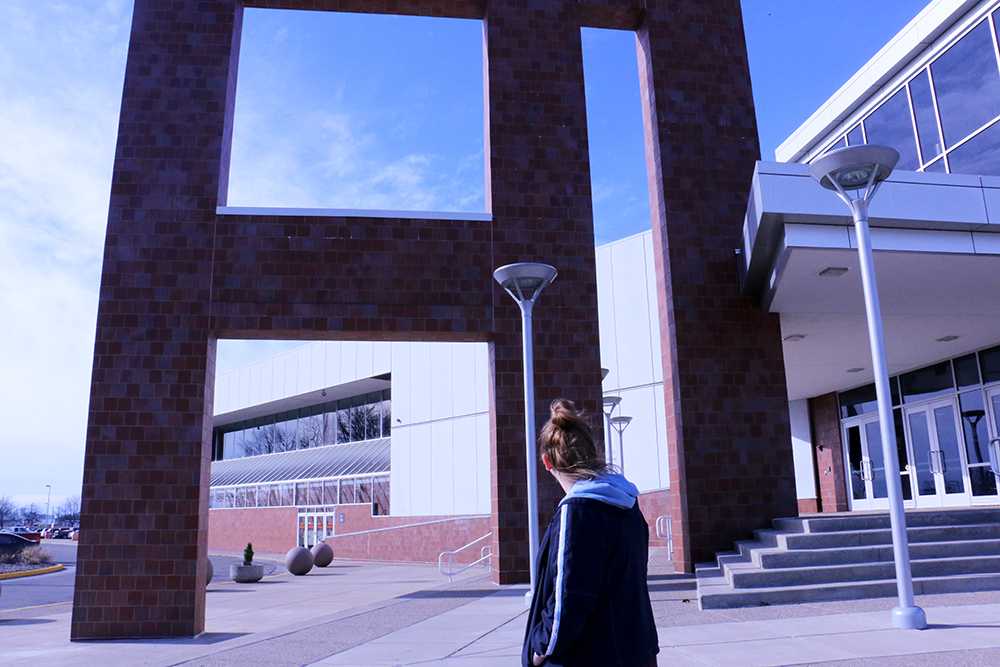
My journey began with the primary source of gossip and conspiracy theories within East: the students.
“I think, isn’t it Hi? It’s welcoming you, like ‘Hi, welcome to East.’ Just to welcome people, make us seem like a warm and good environment,” sophomore Keeleigh Kikendall said.
This is one of the more common opinions among students: coining the bricks as “The Hi sign.”
However, to me, the idea of arranging a large stack of bricks to simply say “Hi” seemed insane. Students do not need a daily welcome to a building they come to five days a week, 180 days a year.
On the other hand, the second most popular student theory of the bricks being a senior class gift to East, did not make much sense to me either.
“I think it is a graduation present of one of the classes, the Class of ‘81. Like a gift to the school, to remember them,” sophomore Jacob Sitterding said. “When we graduate we are going to put something really awesome up and nobody’s ever going to forget it.”
However, it seems awfully conceited to place your graduation year outside of the school building for everyone to see. It would be more understandable if something incredibly important had occurred that year (nothing did), or if it was the year the school was established, but it was not. East opened in 1972.
Personally, I was told as freshman, and believed, that the bricks possibly held the four letters of East in a jumbled, tetris-like manner. Or maybe it is just another vague sculpture in Columbus, open to the viewer’s interpretation.
The unknown eventually got under my skin, so I started to ask any and everyone if they had ideas or were aware of useful reliable sources. I questioned my friends and fellow peers. And after giving answers that fell under these three categories, they realized that the unknown meaning actually bothered them, too.
Over time, it has become a “Do you see a duck or a bunny?”-type optical illusion. “Do you see “Hi”, the number, or the letters?”
And within that: “Which number do you see? In what way are the letters positioned? To whom is it saying ‘Hi’ to?”
I eventually discovered that not even our principal, Mark Newell, is completely sure of what the brick sculpture means. The one source I was certain knew the answer to my question, did not, thus the dilemma continued.
This uncertainty emphasized the caliber of the mystery behind something seen by students every day. I was starting to understand that I would not be able to find the answer to my question within the walls of East.
Instead, through the power of the internet, I moved on to the information that was still available to me. The countless years of researching topics and looking through various online sources for papers and projects had prepared me for thorough Internet investigation; I finally began to find the facts.
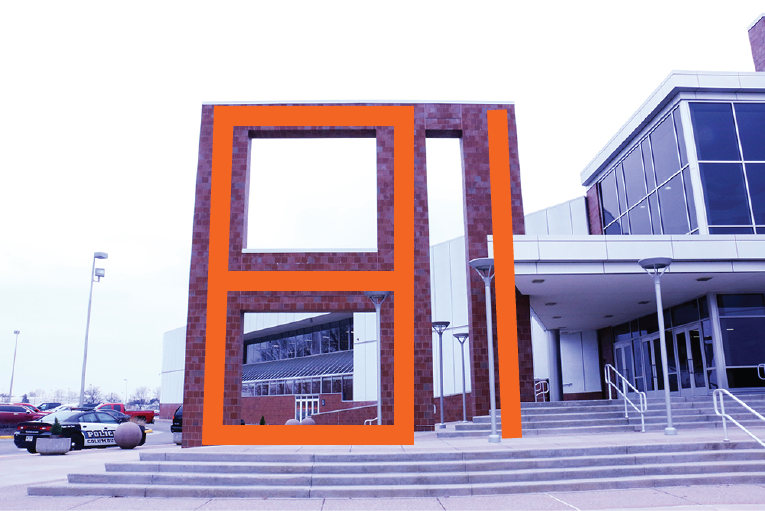
The brick monument, as well as the East building itself, was designed in 1970 by Mitchell-Giurgola Architects, a company started by architects Ehrman B. Mitchell and Romaldo Giurgola.
There was a possibility that they could be contacted and interviewed on their thoughts behind the creation of the specific brick structure or East in it’s entirety. However, Mitchell died in 2005, and I learned that Giurgola died in May 2016.
Despite my disappointment (maybe I should’ve felt worse about them being dead because they were dead, not because I couldn’t interview them), I continued to search through what was left of them in articles on the Internet and their company’s website.
Originally, two of these brick mysteries were made, standing parallel to one another, to serve as “monumental gateways” according to CultureNOW, an art and architectural history site. They were located at the front and back ends of the school with a courtyard in between.
In 2011, during a round of renovations to the building, the courtyard was replaced with the current main offices; a choice explained to me by former principal Gary Goshorn.
Goshorn was the principal from 1990 to 2008 and was at “ground zero” of the decision to fill in the former courtyard with the new main office area.
The new area connected the two previous East buildings, creating a safer learning environment for students, while also providing a new, desperately needed art space for the school.
Goshorn stated that they chose to keep the structure and moved it 20 feet over, explaining that “it was art, but it was also kind of the focal point or branding for East.”
Of course, the structure was created to be an art piece; the architects were simply following the trend of Columbus.
“That was a theme of modernism design and that Columbus feeling of if you have good architecture you need to include art, if you can,” Goshorn said.
The same year East was created, the Henry Moore Arch was dedicated to the Bartholomew County Public Library, and East followed suit, creating a plaza with a focal art piece, or in this case, two.

I came into contact with Goshorn through a long chain of incredibly helpful individuals. It began when I contacted CSO Architects, which connected me with a multitude of employees beginning with Laura Schellinger, who connected me to Sarah Moore and Danielle Stecher. All of whom provided me with beneficial monographs and architecture awards submissions.
After sifting through all of the given information, I was finally able to connect with James Funk, the architect that led the design of the remodel in 2011.
“The entrance was relocated to the east side of the building to increase its visual presence and to allow a direct, accessible route into the building,” Funk said.
Funk was the first person to tell me that the current structure is actually a replica, not an original at all.
“The ‘signs’ were masonry structures, so they could not simply be relocated. They also had some structural issues and were not in very good condition,” Funk said.
Although it is not an original, the current structure has the same dimensions as the originals, ensuring a component of authenticity and maintaining the original identity of the building.
Regardless of all the new information, my original question still remained: What does it mean?
Funk was not sure of the original meaning either.
“We have heard it represented ‘Hi’ or was to be a welcoming gateway,” Funk said.
He did, however, suggest I contact former principal William Jensen who, despite being unable to confirm or deny any of the theories, proposed that I contact another former principal, Gary Goshorn, who Jenson described as “quite the historian”. I was perplexed and full of unanswered questions and minimal hope, so I decided to contact him next. Goshorn would come to be the last link of the chain.
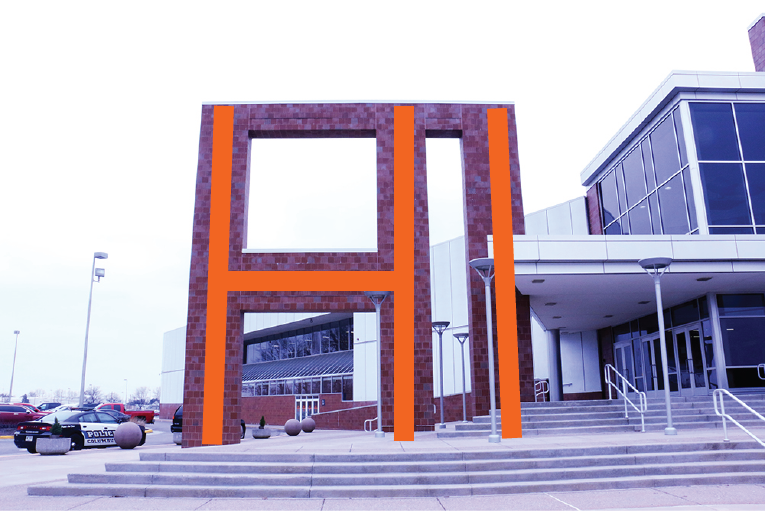
After months and months of endless contemplation, Goshorn was able to answer my ongoing question within the first minute of our conversation, but that is for later.
Goshorn proceeded to share anecdotes of his own experiences, along with other “urban legends” surrounding East that he had heard throughout the years.
“It was that the contractor that built East built it backwards and read the blueprints wrong, and what was supposed to be the backdoor became the front door and what was supposed to be the front door became the backdoor,” Goshorn said.
This would explain the 42 doors on the now front side of the building that do not really open up to anything besides the bus lot. Then again, I cannot imagine a bigger mistake than building a building backwards, besides maybe building it upside down.
Regardless of the history, renovations and changing faces of school leadership, one thing at East has remained the same, the meaning of the structure, the sign.
So here is the long awaited answer given to me by Goshorn:
“Yes, it is a Hi. H-I.”
Yeah, that is his answer.
Anticlimactic, disappointing, and while I’m not going to go as far as heartbreaking, in that minute it felt like it.
After he said those words in a blunt, light-hearted manner, I was in a state of shock. After all this time, the answer seemed to be in the common name that it has been lightly referred to, “The Hi Sign.”
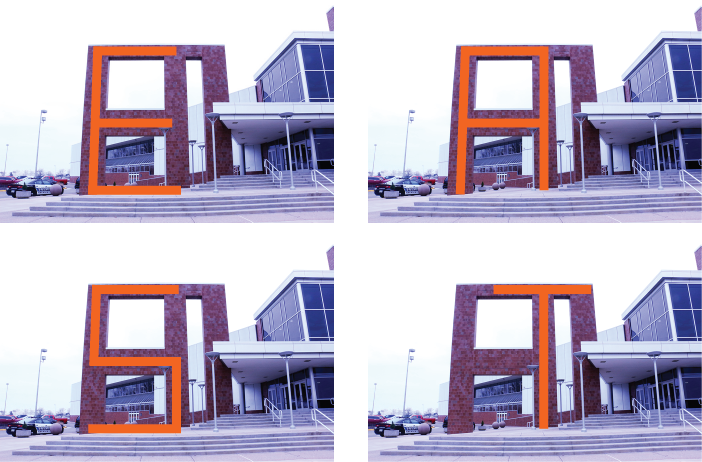
I eventually accepted this answer, finished writing this story and moved onto other things until I received yet another opinion (a day before deadline at that), from Assistant Principal Charles Edwards.
Edwards revealed to me that, although he doesn’t believe that “anyone can know for sure”, it was expressed to him by a group of trusted alumni that the structure does in fact hold the four letters of East, my original theory.
I gained this knowledge from Edwards after I had accepted the conclusion that the meaning of the sign was as simple as a “Welcome to East”. This information sent me spiraling, in my mind the story had been finalized, case closed. This was a new level of complexity to wrap my head around.
I believed the “Hi” answer to be the definite truth, but with the addition of this opinion backed with reportedly credible sources, I have realized that you cannot always determine the precise ‘truth’, especially not in regards to art.
Art is created with the basis of personal interpretation, and there is no way to know the exact answer unless you speak to the creator – an impossible feat in this case.
Now, I am not here to dictate your interpretation of the bricks, there are multiple scenarios to choose from, and always an opportunity to create your own. I want to encourage you to perceive art in your own way, because when it comes down to it, there is rarely a definite answer.
There is no good way to end a story that you have been writing for three months, so instead I offer the prospect of future mysteries and tales to be told. Who knows what questions are left to answer at East?

